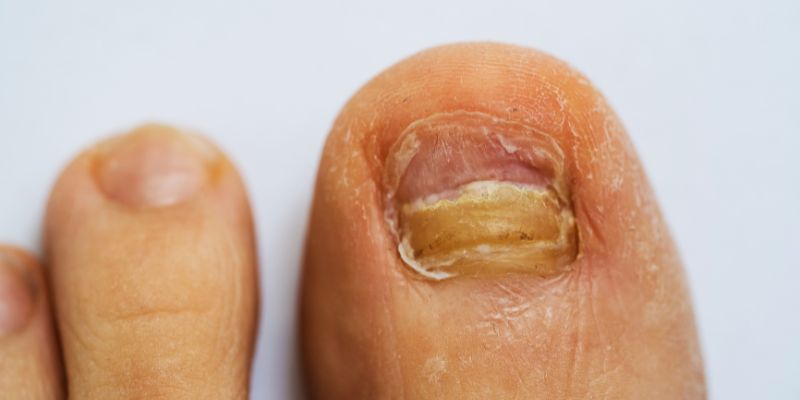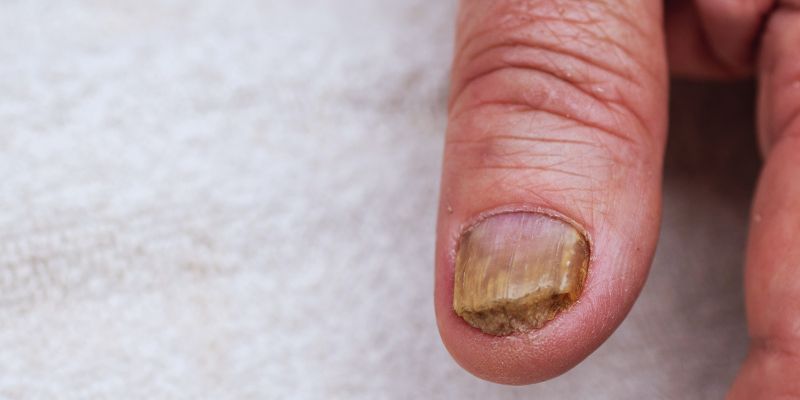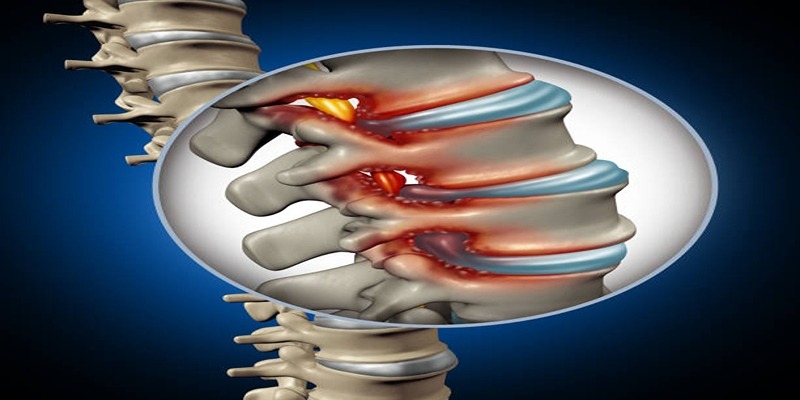Understanding the Warning Signs of Onychomycosis: A Complete Guide
Onychomycosis is a common fungal infection affecting nails globally. Early on, many people detect odd coloring, thickness, and brittleness. Understanding typical onychomycosis warning symptoms may help one receive quick treatment. Our guide covers the early detection of fungal nail symptoms that should never be overlooked. Seeing minute changes could help avoid problems and infection transmission.
Timely intervention guarantees good choices for therapy for fungal nails. Knowing these symptoms enables people to ask appropriate medical advice. Proper knowledge helps you to take charge of your nail condition confidently. Every reader interested in nail care will find something in this article.

Recognizing the Early Symptoms:
Early onychomycosis symptoms usually start with minor changes in the texture and color of the nails. The damaged nail could show brown or yellow tones progressively taking the front stage. Pressure applied in the hands or during walking might cause pain and discomfort. If an infection develops, early detection fungal nail symptoms show up in both toenails and fingernails. Many people find a minor thickening disturbing the smooth surface of the nail. Over time, little cracks and fissures can grow around the nail margins.
Preventing more fungal spread depends on quick recognition of these alterations. Medical experts advise routinely checking nail conditions to identify early signs. Early intervention and better treatment results can follow from simple home observations. Regular inspection hints at typical onychomycosis warning signals that call for expert assessment. Early identification of these early symptoms guarantees efficient therapy of fungal nail techniques and helps to stop long-term nail damage from disseminating infection.
Common Fungal Nail Infection Indicators:
Many times, fungal nail infections show obvious symptoms that let people know they should consult a doctor. As an infection advances, changes in nail color start to show. The nail could turn brown, yellow, or white to show aberrant development. Common markers in damaged nails are unusual texture and consistency. Little trash could gather under the nail, providing uneven surfaces and possible lifting. During daily activities, this procedure can sometimes cause pain and discomfort. A brittle nail structure emphasizes the fungal infection even more.
Early diagnosis depends on careful study of these symptoms. For any variations in nail appearance, doctors advise comparing hands and feet. Early identification helps to stop the aggravation of problems and their spread to nearby locations. Maintaining cleanliness and tracking nail changes enhances general foot care and awareness of foot health. Finding these markers helps to treat fungal nail techniques and improves early intervention. Identify these signs right away to guarantee ideal results regarding general nail condition.
Factors Contributing to Onychomycosis Development:
Onychomycosis in susceptible people develops for several reasons. A compromised immune system makes one more susceptible to fungal diseases, compromising nails. Bad hygienic standards provide ideal circumstances for fungal growth. Regular contact with wet surroundings increases the likelihood of a nail infection even more. Disease progression also depends much on age and underlying medical conditions. Genes can influence individual resistance to nail infections and general nail integrity.
Some professions expose people to substances that compromise the integrity of their nails. Frequent use of public swimming pools increases infection risk. Excessive nail-biting is one of the lifestyle practices that aggravate fungal entrance. Maintaining appropriate nail care practices greatly lowers these contributing hazards. Early prevention and good treatment of fungal nail techniques depend on thoroughly comprehending these elements. Medical professionals advise treating underlying disorders quickly to reduce consequences. Knowing these key elements helps patients to be proactive and fully protect ideal nail condition.

Diagnostic Approaches and Tests for Onychomycosis:
Proper diagnosis of onychomycosis calls for extensive clinical examination and laboratory testing. Doctors look visually for different nail anomalies and discolorations. One could gather a sample of nail tissue for a fungal culture study. Microscopic inspection helps verify the existence of fungal components. Different diagnostic tools improve detection accuracy, including polymerase chain reaction. Starting appropriate treatment depends on the early identification of fungal nail markers. Patients should have regular evaluations if their symptoms continue or get worse over time.
Sometimes, further understanding of nail structural integrity comes from other imaging modalities. Laboratory findings direct medical practitioners to customize individualized treatment programs. Effective diagnostics help to produce better general results. To make a diagnosis, doctors combine physical examination with test findings. Keeping regular follow-up visits guarantees appropriate monitoring of nail condition. Effective prevention of problems and safe long-term nail wellness depends on timely diagnosis and consistent follow-ups.
Treatment Options and Preventative Measures:
Treating onychomycosis requires a multifarious strategy combining appropriate nail care with medication. Topical antifungal medications are often recommended to address early-stage infections successfully. More severe occurrences involving several nails could need oral antifungal medicines. Good fungal nail treatments sometimes require lifestyle changes to limit moisture exposure. Good nail trimming and regular debridement help in general recuperation. Patients are advised to keep their surroundings neat and to refrain from using shared nail tools.
Advanced techniques such as laser treatment offer substitutes for difficult infections. One of the preventive steps is using protective shoes in shared spaces. Regular visits to healthcare professionals guarantee treatment effectiveness and track development. Effective outcomes and greatly lower recurrence comprehensive care plans produce chances. Effective prevention of nail issues and tailored treatment methods depend on medical advice. Early intervention and following recommended courses greatly increase chances for recovery and lower the risk of reinfection. Early care preserves nail health.
The Impact of Onychomycosis and Long-Term Management:
According to many studies, onychomycosis affects millions of people of different ages. Trauma over time and continuous ambient moisture exposure raise sensitivity. Though home treatments can provide some temporary comfort, they usually cannot eradicate the underlying infection. Effective management of this illness depends mostly on consistent monitoring and professional intervention. Patients who mix recommended medication with thorough cleaning habits report greater recuperation results.
Every instance may call for a different treatment strategy catered by medical professionals, so it is important to understand. Knowledge of fungal nail infections helps people make wise health decisions. Stopping reinfection calls for both lifestyle changes and medicinal therapy. Achieving long-lasting nail health and general well-being requires thorough care. Research on this ongoing illness keeps enhancing knowledge of its causes and available treatments. Good management guarantees future success in nail restoration.
Conclusion:
Maintaining nail health depends on one knowing frequent onychomycosis warning signals. Early indications of fungal nails allow for quick management and better results. This guide has provided unambiguous advice on spotting, treating, and controlling fungal nail infections. Good treatment fungal nail techniques help to avoid reinfections and consequences. Being alert and seeing medical experts guarantees suitable treatment. Knowledge helps patients to keep strong nail hygiene. Our all-encompassing strategy ensures long-term nail health and ongoing healing. Trust incorrect knowledge and aggressive steps to guarantee the best nail condition.











